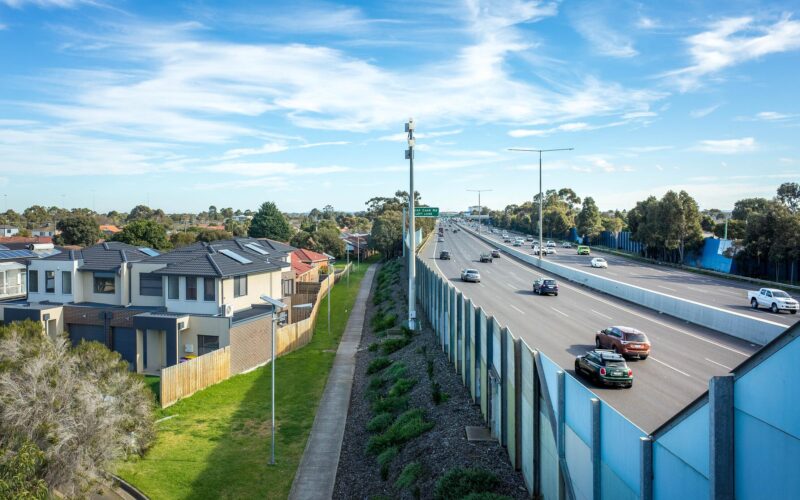If you’ve ever lived or worked near a construction site, you know the sound: the persistent drone of machinery, the clanging of metal, the beeping of trucks in reverse. For some, it’s just part of urban life. For others, it’s a serious disruption that affects everything from sleep to sanity.
In response, many governments and developers have turned to noise barriers—those tall panels or padded fences surrounding worksites—to help reduce sound spillover. But while they’re a familiar sight, it raises an important question: Should noise barriers be mandatory for all construction sites? Or are there better, smarter ways to manage construction noise?
Construction Noise Isn’t Just an Inconvenience
We’ve all experienced the irritation of being woken up early on a weekend by the sudden buzz of a power tool. But for many people, especially those living near long-term construction projects, that irritation builds over time into something more serious.
Chronic exposure to high noise levels can lead to:
- Interrupted sleep cycles
- Difficulty concentrating, especially for kids and students
- Heightened stress and anxiety
- Even potential hearing damage with prolonged exposure
And let’s not forget workplaces, hospitals, and elderly care centres—where peace is more than just nice to have. In these cases, noise pollution becomes a real public health concern, not just a minor inconvenience.
This is where mandatory noise barriers come in. By requiring construction firms to install sound-reducing measures, especially in sensitive zones, local governments can protect residents and workers from long-term harm.
A Straightforward, Proven Solution
Noise barriers are a relatively simple and effective noise-reduction tool. When properly installed, they can:
- Reduce noise levels by up to 10–30 decibels
- Block direct sound pathways
- Create a visual buffer that also improves site safety and appearance
The materials vary—from reusable acoustic panels to sound blankets—but the result is usually the same: quieter surroundings for everyone involved.
Good for Community Relations
Mandatory noise barriers signal that developers take the community’s well-being seriously. In highly urbanised areas, this can build trust and even improve a developer’s reputation. If people feel heard (no pun intended), they’re more likely to be patient and supportive of the construction timeline.
But Are There Better Alternatives?
Not everyone agrees that noise-control barriers should be a universal requirement. Here’s the other side of the conversation.
Not All Sites Are the Same
Making noise barriers mandatory across the board can create unnecessary burdens, especially for smaller-scale projects or those in remote areas. For instance, if a contractor is renovating a single unit in a low-density area, does it make sense to require a full acoustic setup?
Flexibility can go a long way. Some projects might benefit more from operational noise planning than physical barriers.
Technology Is Evolving
Noise barriers are helpful, but they’re not the only game in town. New technologies are offering smarter, sometimes more efficient ways to manage sound, such as:
- Low-noise construction equipment
- Directional sound control systems
- Real-time noise monitoring to guide operations
- Construction scheduling that avoids high-noise work during sensitive hours
Rather than relying solely on barriers, a more modern approach could combine several strategies tailored to the site and its surroundings.
One Size Doesn’t Fit All
In areas where construction is taking place far from homes or schools—say, in an industrial zone—it may not be necessary to install full-scale soundproofing.
That’s why some experts argue for a tiered system based on location, scale, and proximity to sensitive areas, rather than a blanket requirement for every site.
Striking a Balance: Smarter Regulations Instead of Blanket Rules
So, where does that leave us?
It’s clear that noise pollution is a real problem, and ignoring it only leads to public backlash, health issues, and strained community relations. But making noise barriers mandatory for all construction sites might not be the most effective or efficient path forward.
A balanced solution might include:
- Mandatory noise mitigation plans instead of just mandatory barriers
- Clear guidelines that assess the risk and impact of each project
- Allowing for innovative alternatives like silent piling or real-time noise monitoring
- Requiring noise barriers only in designated zones like residential, educational, and healthcare areas
This approach lets developers be responsible without being burdened, while also encouraging innovation in how we reduce construction noise.
Final Thoughts: The Bigger Picture
Noise barriers shouldn’t just be about checking a box to meet regulations. Whether they’re required by law or voluntarily installed, their true value lies in their impact on people’s everyday lives.
Yes, there may be better or more flexible solutions out there. But what matters most is that construction teams, big or small, prioritise noise management as part of their overall commitment to being good neighbours.
After all, a city isn’t just made of concrete and steel. It’s made of people. And if we want to build better cities, we need to listen, literally.

